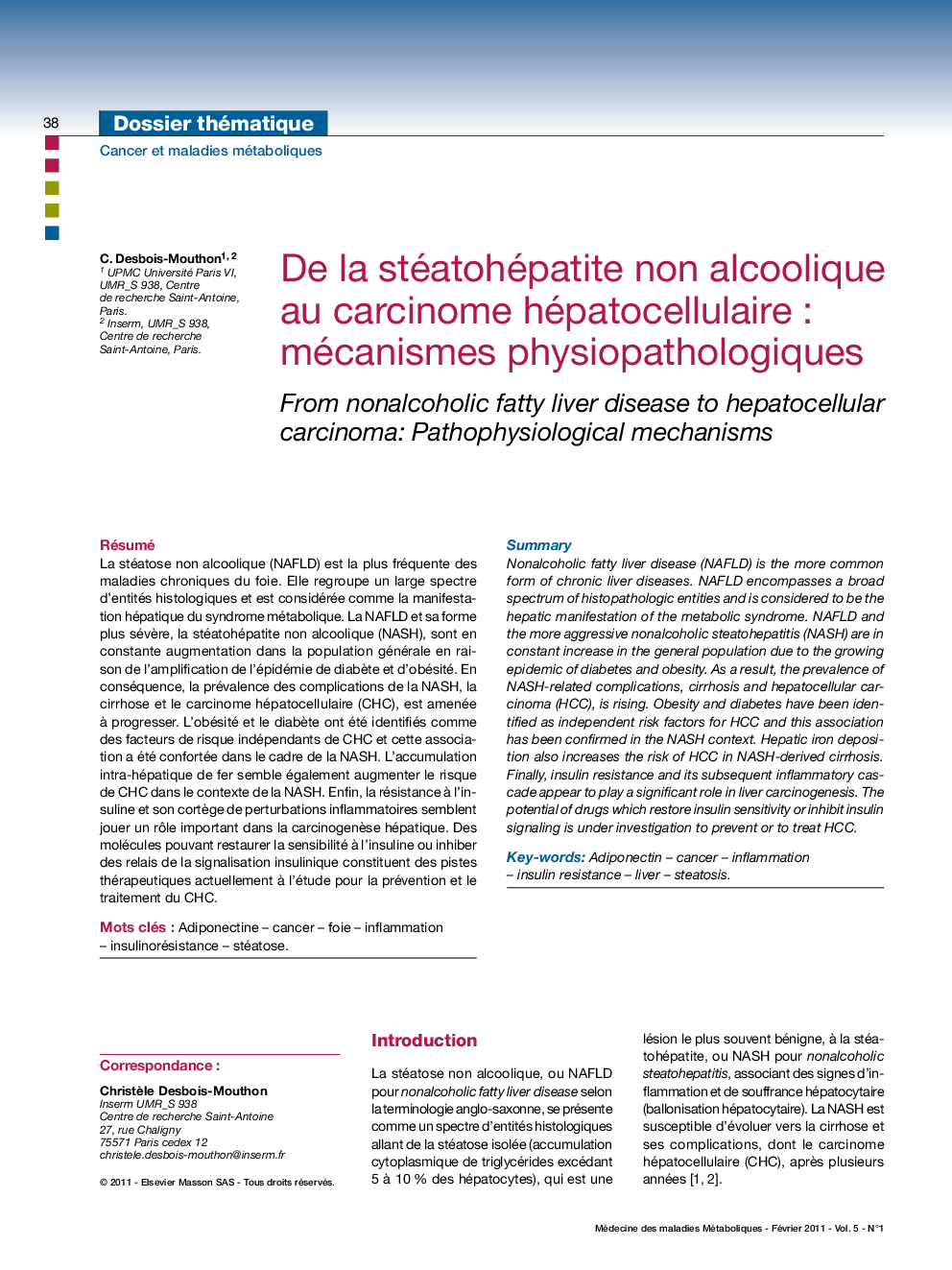| Article ID | Journal | Published Year | Pages | File Type |
|---|---|---|---|---|
| 3275001 | Médecine des Maladies Métaboliques | 2011 | 7 Pages |
Abstract
Nonalcoholic fatty liver disease (NAFLD) is the more common form of chronic liver diseases. NAFLD encompasses a broad spectrum of histopathologic entities and is considered to be the hepatic manifestation of the metabolic syndrome. NAFLD and the more aggressive nonalcoholic steatohepatitis (NASH) are in constant increase in the general population due to the growing epidemic of diabetes and obesity. As a result, the prevalence of NASH-related complications, cirrhosis and hepatocellular carcinoma (HCC), is rising. Obesity and diabetes have been identified as independent risk factors for HCC and this association has been confirmed in the NASH context. Hepatic iron deposition also increases the risk of HCC in NASH-derived cirrhosis. Finally, insulin resistance and its subsequent inflammatory cascade appear to play a significant role in liver carcinogenesis. The potential of drugs which restore insulin sensitivity or inhibit insulin signaling is under investigation to prevent or to treat HCC.
Keywords
Related Topics
Health Sciences
Medicine and Dentistry
Endocrinology, Diabetes and Metabolism
Authors
C. Desbois-Mouthon,
